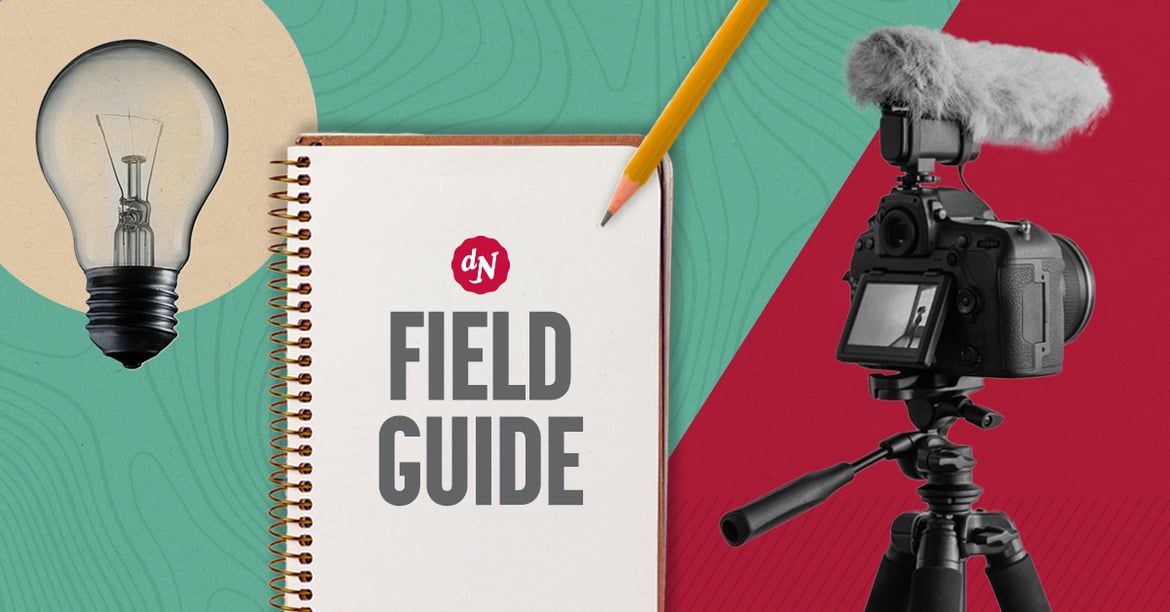
Chad Cooper
Remember the last thing you watched? Was it a film? A streaming series? A commercial? The movies, shows, and ads you remember all have a common denominator: video storytelling.
Video storytelling has the power to make an emotional connection, engaging with an audience in a way few other things can. The best part: you can tap into that same magic, whether you have professional equipment or are simply using your phone.
Want to know how? We’re here to share our process with you in a way that’s digestible, relatable, and repeatable.
Read on to discover how to:
- Identify, craft, and humanize stories and concepts that align with your goals.
- Think beyond the mere idea of content to create intentional, poetic, and engaging work.
- Equip yourself with a storytelling field guide to navigate your journey from initial concept to the final video.
What is Video Storytelling?
Video storytelling is the combination of messaging and movement. It's the craft of combining words and moving images to create a narrative, allowing a person to experience a company, product, or service through a creative and visual lens. We like to think about it in a simple way:
Words spark imagination. Visuals bring imagination to life.
When you make messaging tangible with video, you open a new world to your audience. It’s also an effective way to humanize your marketing efforts, putting sights and sounds to topics and ideas.
Where to Start
Compelling, engaging, and effective video storytelling starts here:
- The clarity of WHY.
- The discipline of HOW.
- The consistency of WHAT.
Define WHY you’re creating your video. Establish your goal(s) and what you want the video to accomplish.
Decide HOW you’re going to reach your goal(s) by solidifying concepts and planning.
Develop WHAT you want to create: type of video, length, format, etc.
This is when it’s important to go beyond the mere idea of content. Content is arguably the most used (and overused) term in marketing. It’s come to describe virtually everything, and while there’s a place for it in our lexicon, we know the value of going further.
Content is merely filling a space. When we think this way, we tend to lose sight of strategy, creativity, and the emotions of our audience.
Instead, concentrate on substance and storytelling. This change in mindset ensures what you develop will connect on a human level and tap into the creative spirit needed to produce great work.
From there, you can work to bring your video to life using a simple script framework.
Creating Your Script
We use a simple approach to script our videos that promotes collaboration and helps us progress from messaging to visual intent.
Lay out a Word document with three columns.
- Script (Messaging)
- Storyboard (Images & Inspiration)
- Actions/Shot Ideas (Filming Instructions)
The above framework allows you to plot copy, add image inspiration, and include filming instructions in one place, and it’s a vital component to your overall process.
Your Storytelling Field Guide

ESTABLISH YOUR TONE & MOOD
Do you want your video to be funny, serious, bold? Or maybe something else entirely? Setting the tone drives your writing and visual style, so you want to do it early in your planning.
BOOKEND YOUR NARRATIVE
Get a sense of how you want your video to begin and end. This doesn’t need to be set in stone when you start planning, but having an idea of your beginning and ending helps guide your work and keeps you focused on the goal.

READ AS YOU WRITE
Become your own narrator to get a feel for how the writing will flow. Words can look great on a page, but you need to hear them out loud to develop pacing.

KNOW YOUR GEAR & YOUR AUDIENCE
Do you have video equipment or simply your phone? Are you making a professional video with high production value? Or do you need something more organic and less formal? Each option is valid and can achieve specific results. This is why starting with your goal is so important.
From there, you want to familiarize yourself with your equipment or phone settings. Be sure to account for aspects like glare, over-saturation, and camera stability. Depending on your goal and audience, not everything has to be polished, but it should be presentable and fit your vision. Simple adjustments can go a long way toward a great final creation.
ADJUST AS YOU FILM
A script and storyboard are important, but you never know what will happen once you’re in the field and filming. Embrace fluidity and flexibility to capture what matters.
What About Interviews?
If you’re filming an interview or testimonial, we recommend not developing a verbatim script. In most if not all cases, you’re aiming for more of a conversation than an interview. With that in mind, you want people to sound natural, and that rarely happens when someone has memorized a script or is reading off a teleprompter. Create an outline and key points to cover but allow room for spontaneity; that’s when you get the good stuff.
Ready to start but still need more guidance on how to bring your vision to life? Connect with us and let’s chart the course toward compelling video storytelling.





Submit a Comment